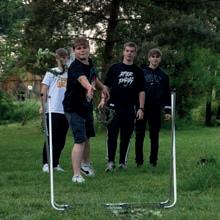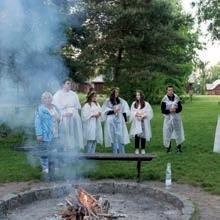
1 minute read
Midsummer Night

The 24th of June is a feast day in Lithuania. It’s a non-working day and on St. John’s Eve, which precedes the 24th, Midsummer Night is celebrated with revelry all over the country. The main festivities of this night, also known as Sobótka, Kupala’s night and festival of Dew, take place in Vilnius and Kernavė. The most important traditions of this holy day are plaiting garlands, lighting bonfires and jumping over them, bathing with dew, looking for the fern flower, singing Lithuanian folk songs and many other midsummer activities.
Advertisement



It is difficult to imagine the climate of this night without garlands, which were carefully plaited from nine types of flours, twigs, grasses and herbs. Every plant had its meaning and every move of plaiting the garland was accompanied by some saying or thought. Grasses had to be of different lengths, blooming ones had to be shorter, whereas flowers and grain, which symbolised welfare, had to be longer. Midsummer garlands were plaited while singing folk songs. Garlands were to symbolise mainly health, good harvest and future wealth for ladies and young boys. Flowers entwined with rue brought girls luck, whereas boys wore garlands made from oak twigs, which symbolised strength, health and diligence.






